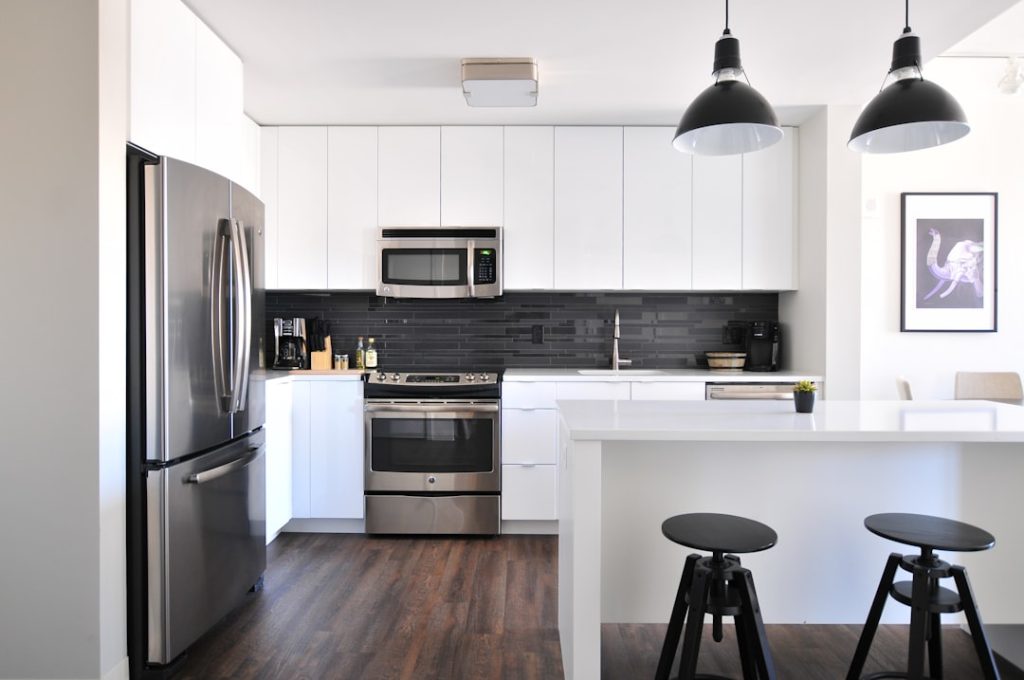Hot pads are an essential tool in the kitchen for anyone who loves to cook or bake. They are designed to protect your hands and surfaces from the heat of pots, pans, and dishes straight from the oven or stove. Using a hot pad can prevent burns and injuries, as well as damage to your countertops and tables. Whether you are a professional chef or a home cook, having a reliable hot pad is crucial for ensuring safety and preventing accidents in the kitchen.
Hot pads are not only useful for handling hot cookware, but they also provide a stable surface for setting down hot dishes and protecting your countertops from heat damage. They are versatile and can be used for a variety of kitchen tasks, such as opening stubborn jars, gripping hot handles, and even doubling as a trivet for serving dishes at the table. With so many benefits, it’s clear that using a hot pad is an essential practice for anyone who spends time in the kitchen.
Key Takeaways
- Using a hot pad is important for protecting surfaces from heat damage and preventing burns
- Types of hot pads available include silicone, cloth, and cork options
- Properly using a hot pad involves placing it under hot dishes or pots and using it to handle hot items
- Benefits of using a hot pad include safety, convenience, and preventing damage to surfaces
- When choosing a hot pad, consider material, size, and heat resistance; alternatives include oven mitts and trivets
- Proper care and maintenance of hot pads involves regular cleaning and checking for signs of wear and tear
Types of Hot Pads Available
There are several types of hot pads available on the market, each with its own unique features and benefits. The most common type of hot pad is the traditional square or rectangular fabric pad filled with insulating material such as cotton or silicone. These pads are designed to provide a thick barrier between your hands and hot surfaces, offering protection from burns and heat transfer. Silicone hot pads are particularly popular for their heat resistance and non-slip grip, making them ideal for handling hot pots and pans.
Another popular type of hot pad is the silicone oven mitt, which provides full hand coverage and heat protection. These mitts are designed to offer maximum dexterity and flexibility while handling hot cookware, making them a favorite among professional chefs and home cooks alike. Additionally, there are also specialized hot pads designed for specific tasks, such as canning or grilling, which offer added features like water resistance and extra heat protection. With so many options available, it’s important to choose a hot pad that best suits your cooking needs and preferences.
How to Properly Use a Hot Pad
Properly using a hot pad is essential for ensuring safety and preventing accidents in the kitchen. When handling hot cookware, always make sure to use a hot pad to protect your hands from burns and heat transfer. When removing dishes from the oven or stovetop, use a hot pad to grip the handles or edges of the cookware to prevent accidental burns. It’s important to always use a dry hot pad, as moisture can reduce its heat resistance and increase the risk of burns.
When setting down hot dishes on countertops or tables, always use a hot pad as a protective barrier to prevent heat damage. Additionally, when using a hot pad as a trivet for serving dishes at the table, make sure to choose a heat-resistant pad that can withstand the temperature of the dish. Properly using a hot pad not only protects you from burns but also prevents damage to your kitchen surfaces.
Benefits of Using a Hot Pad
| Benefits of Using a Hot Pad |
|---|
| 1. Protects surfaces from heat damage |
| 2. Provides a safe grip for hot dishes |
| 3. Helps to keep food warm |
| 4. Prevents scratches and stains on countertops |
| 5. Can be used as a trivet for hot pots and pans |
Using a hot pad offers numerous benefits for anyone who spends time in the kitchen. The primary benefit of using a hot pad is safety, as it provides a protective barrier between your hands and hot surfaces, reducing the risk of burns and injuries. Hot pads also offer versatility, as they can be used for a variety of kitchen tasks such as opening jars, gripping hot handles, and serving dishes at the table. Additionally, using a hot pad can prevent damage to your countertops and tables by providing a stable surface for setting down hot cookware.
Furthermore, using a hot pad can enhance your cooking experience by providing confidence and peace of mind when handling hot dishes. Whether you are a professional chef or a home cook, having a reliable hot pad can make cooking and baking more enjoyable and stress-free. With so many benefits, it’s clear that using a hot pad is an essential practice for anyone who loves to cook.
Tips for Choosing the Right Hot Pad
When choosing a hot pad, there are several factors to consider to ensure you select the right one for your needs. First, consider the material of the hot pad. Silicone hot pads offer excellent heat resistance and non-slip grip, making them ideal for handling hot pots and pans. Fabric hot pads filled with insulating material such as cotton are also popular for their thickness and flexibility.
Next, consider the size and shape of the hot pad. Choose a size that comfortably fits your hand and provides adequate coverage when handling hot cookware. Additionally, consider the shape of the hot pad, whether square, rectangular, or mitt-shaped, based on your personal preference and cooking tasks.
It’s also important to consider additional features such as water resistance and ease of cleaning when choosing a hot pad. Some hot pads are designed specifically for canning or grilling and offer added features such as water resistance and extra heat protection.
Alternatives to Hot Pads

While hot pads are essential for kitchen safety, there are alternative methods for handling hot cookware if you find yourself without a hot pad. One common alternative is using a folded kitchen towel or oven mitt to grip hot handles or edges of cookware. While not as heat-resistant as a dedicated hot pad, a thick kitchen towel or oven mitt can provide some protection from heat transfer.
Another alternative to hot pads is using silicone or rubber jar grippers to open stubborn jars or lids. These grippers provide a non-slip surface for better grip and can prevent burns when dealing with hot jars.
Additionally, using silicone or rubber trivets can serve as an alternative to hot pads for setting down hot dishes on countertops or tables. These trivets offer heat resistance and stability for protecting surfaces from heat damage.
Proper Care and Maintenance of Hot Pads
Proper care and maintenance of hot pads are essential for ensuring their longevity and effectiveness in the kitchen. Fabric hot pads should be regularly washed according to the manufacturer’s instructions to remove food stains and odors. It’s important to avoid using fabric softener when washing fabric hot pads, as it can reduce their heat resistance.
Silicone hot pads should be cleaned with warm soapy water and dried thoroughly after each use to prevent bacteria growth and maintain their non-slip grip. Additionally, inspect silicone hot pads regularly for any signs of wear or tear, such as cracks or thinning areas, which can reduce their heat resistance.
Proper storage of hot pads is also important for maintaining their effectiveness. Store fabric hot pads in a clean, dry area to prevent mold and mildew growth. Silicone hot pads should be stored away from direct sunlight or heat sources to prevent damage to their heat resistance.
In conclusion, using a hot pad is essential for anyone who loves to cook or bake. With various types available on the market, it’s important to choose one that best suits your cooking needs and preferences. Properly using a hot pad is crucial for ensuring safety in the kitchen and preventing accidents. Additionally, proper care and maintenance of hot pads are essential for ensuring their longevity and effectiveness in the kitchen. Whether you are a professional chef or a home cook, having a reliable hot pad is crucial for ensuring safety and preventing accidents in the kitchen.
If you’re looking for a hot pad to protect your hands while cooking, you might also be interested in checking out the selection of tactical gloves available at www.armsexporter.com. These gloves are designed to provide protection and grip in high-intensity situations, making them a great option for cooking, outdoor activities, or even tactical training. With a variety of styles and features to choose from, you’re sure to find the perfect pair to suit your needs.
FAQs
What is a hot pad?
A hot pad is a flat, heat-resistant pad used to protect surfaces from hot dishes, pots, and pans.
What materials are hot pads made of?
Hot pads can be made of various materials including silicone, cotton, neoprene, and silicone.
How do hot pads work?
Hot pads work by providing a barrier between a hot dish or pan and a surface, preventing heat damage.
Are hot pads safe to use in the microwave?
Many hot pads are safe to use in the microwave, but it is important to check the manufacturer’s instructions for specific guidelines.
Can hot pads be used as trivets?
Yes, hot pads can be used as trivets to protect surfaces from heat.
How do you clean hot pads?
Hot pads can typically be cleaned by hand washing with soap and water, or they may be machine washable depending on the material.
Can hot pads be used to handle hot dishes directly?
Hot pads are designed to protect surfaces from heat and are not typically recommended for handling hot dishes directly. It is best to use oven mitts or pot holders for handling hot dishes.


